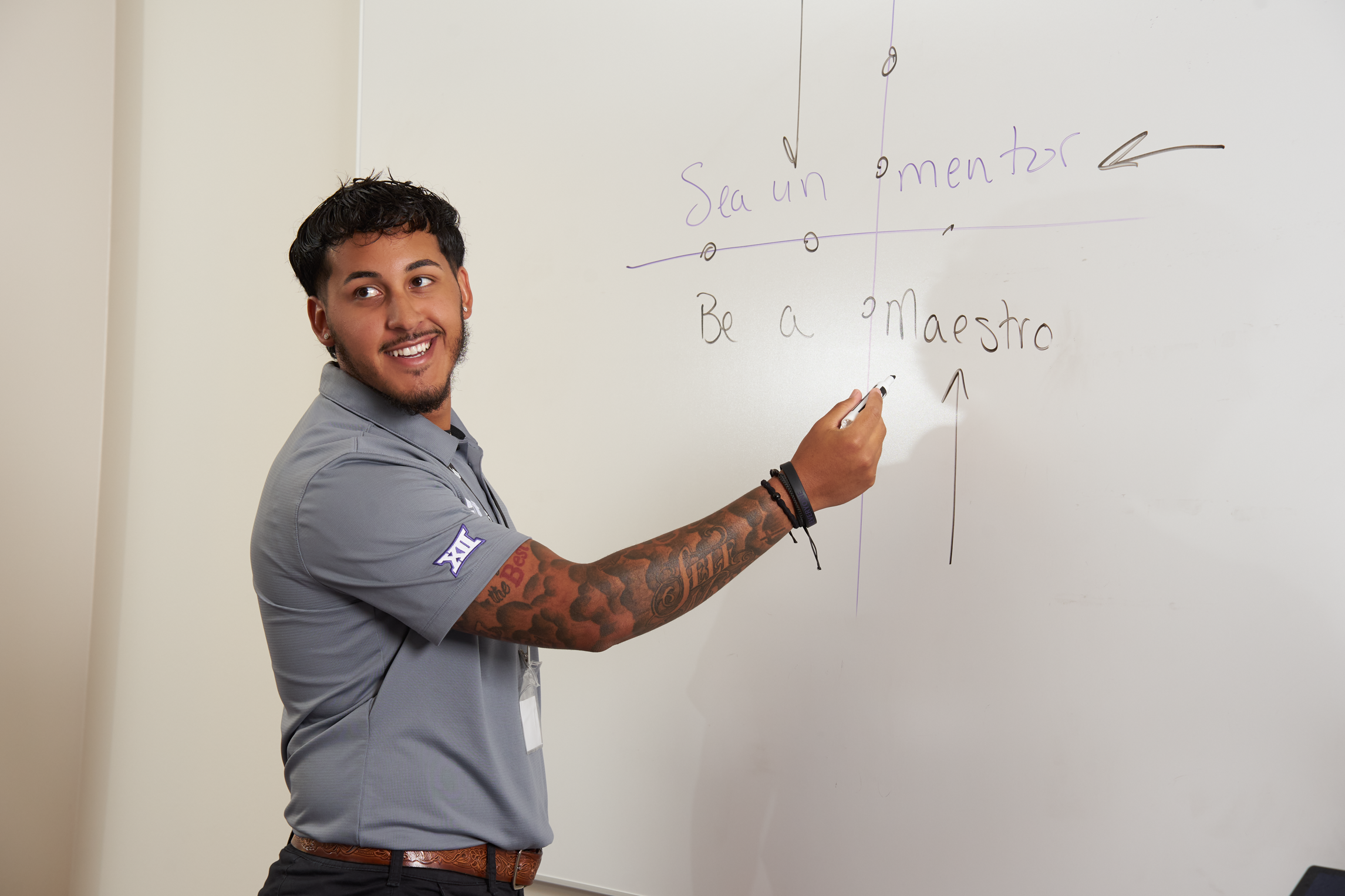Maestro Program

The TCU College of Education offers the MAESTRO program seeks to recruit and sustain a community-represented workforce for K-12 teaching positions. It supports TCU students interested in pursuing a career in education and becoming leaders within their community.
Currently, there are over 20 enrolled MAESTRO students. Students are seeking teaching certifications in English Language Arts, Early Childhood Education, Music, Physical Education, Bilingual Education, Social Studies and more.
For questions, please contact Melissa Mendoza.
What We Offer
- Community with other MAESTROs
- Mentorship
- Networking
- Professional Development
- Connections to the Campus Community
- And much more!
In a partnership between Dr. Steve Przymus and Dean Frank Hernandez, the MAESTRO program was founded in 2022 to address the shortage of Latinx male teachers in the classroom. Only 2% of the teacher workforce consists of Hispanic males (National Center for Education Statistics, 2017). MAESTRO has grown into a thriving community at TCU and in the Fort Worth Community that works with pre-service and in-service teachers to strengthen diversify the future teacher workforce and support the current teacher workforce. The program began with four MAESTRO students and held its inaugural MAESTRO conference in 2023.
National Center for Education Statistics. (2017). Number and percentage distribution of public-school teachers by gender, race, and selected teacher characteristics: 2015–16 (rev). National Teacher and Principal Survey.
The MAESTRO conference is held annually on TCU’s campus in the Spring. This conference is free to all and provides networking and community-building opportunities, as well as speakers, food, and connections to TCU’s other offices and programs. The event is open to all current high school and college students interested in teaching, as well as current teachers, counselors, and administrators.
If you’d like to join us for the MAESTRO conference, please include your email here, and we will send you the registration information.
Are you interested in learning more about MAESTRO and how you you can connect? Connect with us.
All MAESTRO students must apply and be accepted to TCU before becoming part of the MAESTRO program. If interested, fill out this form to share your information with the program.